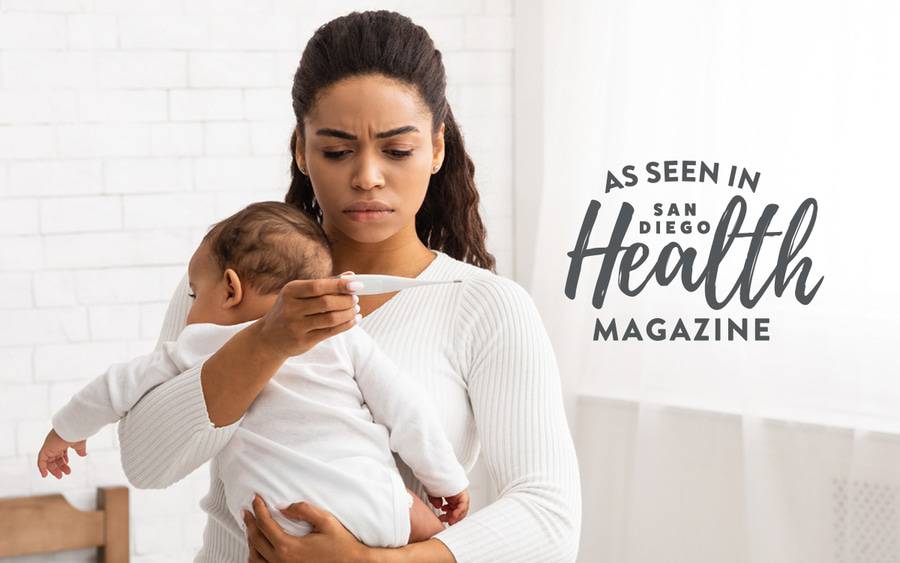What Are the Most Common Infant Illnesses?
Remember to check with your pediatrician for care advice

Remember to check with your pediatrician for care advice
It can be difficult to know what’s considered “normal” when you’re a first-time parent, especially when there is so much to learn about parenthood itself. Your child’s pediatrician can help clear up the confusion and ease your anxious mind.
At Scripps, our pediatricians are skilled at providing care for a range of ages and supporting parents’ efforts to manage the care of their little ones, says Melissa Sprague, DO, a pediatrician at Scripps Coastal Medical Center Carlsbad.
“Our pediatricians play an integral part in providing preventive care and treatment for a wide array of diagnoses,” Dr. Sprague says. “Scripps pediatricians use evidence-based medicine to ensure patients are receiving the most up-to-date treatment.”
Dr. Sprague explains the most common infant illnesses and when you should take your child to the doctor.
Respiratory issues
The most common respiratory issues for infants are upper respiratory infections caused by viruses.
Cold symptoms in infants typically include runny nose, sneezing, congestion, cough and fussiness. These viral infections are treated with supportive care including nasal saline, a cool mist humidifier and rest.
If your child is under three months of age, it is best to be seen by a pediatrician if your child is showing signs of illness.
Diaper rashes
Diaper irritant dermatitis and diaper candidiasis are the two most common types of infant diaper rash.
Diaper irritant dermatitis — irritation of the skin from urine or stool — causes red or pink patches on the skin covered by the diaper. This rash is usually treated with frequent diaper changes, hypoallergenic wipes and a thick barrier cream with zinc oxide.
Diaper candidiasis, a fungal infection, typically causes small pink or red bumps and is usually worse in the folds of the groin. This type of rash is treated with antifungal ointment.
Diarrhea and vomiting
The most common cause of vomiting and diarrhea in children is a virus. Other causes include travel related illnesses or illnesses tied to foods.
Symptoms are treated with supportive care, including fluids and probiotics. Children should be monitored for signs of dehydration, including a decrease in tears, wet diapers or urination or dry cracked lips.
Ear infections
Ear infections result from fluid build-up in the middle ear that causes the eardrum to become inflamed and are typically preceded by a viral respiratory illness.
Kids are more likely to have ear infections because the tubes that drain fluid from their ears are smaller than adult ears. Symptoms typically include fever, fussiness, ear pain (ear tugging in infants) or drainage from the ear.
It is best to have a pediatrician confirm an ear infection, which is typically treated with antibiotics or monitored closely with a “watch and wait” approach depending on age and symptoms.
Hand-foot-mouth disease
Caused by a virus and typically seen in summer and fall, hand-foot-mouth disease includes sores in the mouth and a rash on the palms and soles. The rash can also be generalized.
You can treat the symptoms with supportive care and fluids. One of the complications of the disease is dehydration due to pain from the mouth blisters. Children should be monitored for signs of dehydration and are generally the most contagious the first week of the illness.
When to seek medical attention
When should you call a doctor about any illness symptoms? Dr. Sprague says the biggest red flags include a fever that lasts longer than three days, ear pain, signs of dehydration, difficulty breathing, lethargy or irritability.

This content appeared in San Diego Health, a publication in partnership between Scripps and San Diego Magazine that celebrates the healthy spirit of San Diego.